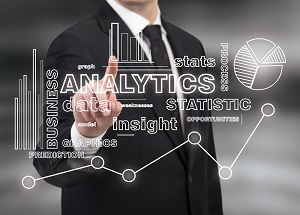Artificial intelligence (AI) and big data are some of today’s more game-changing technologies. Countless think pieces have talked about their potential, leading many businesses to invest in them, but many AI and data projects fall short of expectations. AI-unified data analytics provides a solution to this hurdle.
Data analytics relies on vast amounts of information from different sources to be effective. The same often goes for AI. Unified analytics consolidates these disparate data sources and analytics pipelines into a single platform, using AI to automate that process. Here’s how this consolidation and automation can improve your business.
1. It Reduces Costs
IT sprawl is one of the biggest problems in big data analytics. One survey found that 43% of organizations today use four to six different platforms to manage their information, with 11% using more than 10. That can quickly become expensive.
Consolidating your data into a single platform provides the same information without paying for six or more services. You’ll also be able to trim down your related infrastructure. With fewer silos and separate databases, you can use the same security and governance tools to manage all your data.
AI-unified data analytics also saves costs by streamlining timelines. Automating the information cleansing and analysis process will lead to faster results and produce quicker returns on investment.
2. It Provides More Reliable Insights
Unified analytics is also more accurate than more traditional, fragmented approaches. Having the right information is only part of drawing reliable conclusions. You also have to understand your data in context, which is much easier when you can see everything in one place.
Unifying your data collection and analytics processes allows you to analyze it as a whole. Because insights from one database may affect your understanding of another, this unification is important for making the most informed decisions.
Removing silos may also let you consider information that may otherwise go overlooked. Info that’s collected but not used is called “dark data,” and it accounts for 80% of all data in enterprises. Tearing down traditional barriers to see and use this information ensures you make decisions based on everything available, improving reliability.
3. It Boosts Productivity
Automation and consolidation through AI-unified data analytics will also help you improve your productivity. Employees will spend less time switching between applications and can use AI to automate the most time-consuming, repetitive tasks. Even marginal improvements in these areas can leave you considerably more time in a year.
The improved decision-making of unified analytics will also help. Employees who feel confident in their decision-making have increased productivity and engagement, helping them accomplish more. Leaving unengaging work to AI will further boost their interest in their roles.
4. It Streamlines Regulatory Compliance
Another benefit of AI-unified data analytics is easier regulatory compliance. Data regulations like the GDPR and CCPA are becoming more common, but complying with them is often challenging for businesses. Siloed data and disparate workflows make it difficult to see what information you have and how to access it, but unification improves transparency.
Bringing all your data and analytics pipelines into one place lets you gain better visibility into them. You can then spot potential compliance issues and implement effective governance policies more easily.
Applying any changes across siloed data operations is time-consuming and potentially expensive. Consolidating them through unified analytics means you only need to install changes once to use them across the entire organization, saving time and money.
5. It’s More Scalable
Unified analytics makes big data and AI more scalable. Data is growing at an astronomical pace, with total volumes expected to pass 180 zettabytes by 2025. You’ll need a scalable analytics solution to keep capitalizing on this rising amount of information.
Scaling siloed processes and technologies individually is difficult and expensive. By contrast, if you use one platform to manage everything, you can expand or shrink it as necessary with relative ease. AI’s faster ROIs will also help you make the most of new data collection and analysis projects.
Effective analytics will produce increasingly valuable insights as data volumes grow. You’ll need to take advantage of that to keep up with the competition, which requires unified analytics’ scalability.
Unified Data Analytics Unlocks Your Data’s Potential
Many businesses don’t reach their data’s full potential because their analytics processes make it unnecessarily complex. AI-unified data analytics provides a better way forward, helping you use all your information effectively.
As data becomes more important to businesses, so will unified analytics. Implementing these practices today can pave the way for success in the future.
About the Author

April Miller is a senior IT and cybersecurity writer for ReHack Magazine who specializes in AI, big data, and machine learning while writing on topics across the technology realm. You can find her work on ReHack.com and by following ReHack’s Twitter page.
Sign up for the free insideBIGDATA newsletter.
Join us on Twitter: https://twitter.com/InsideBigData1
Join us on LinkedIn: https://www.linkedin.com/company/insidebigdata/
Join us on Facebook: https://www.facebook.com/insideBIGDATANOW





Speak Your Mind